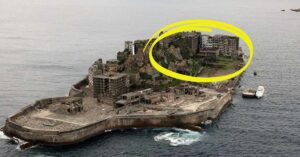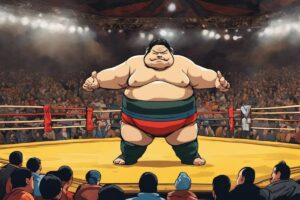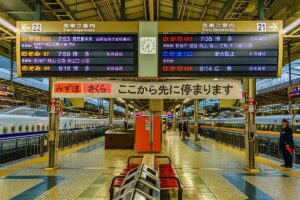Let me introduce you to Ukiyo-e, a traditional Japanese art form that has captivated audiences for centuries! It’s all about crafting intricate images using wooden blocks and printing them onto paper.
Whether in the 17th century or the present day, it remains beloved by many.
The name itself – “pictures of the floating world” – is just as dazzling as the paintings themselves.
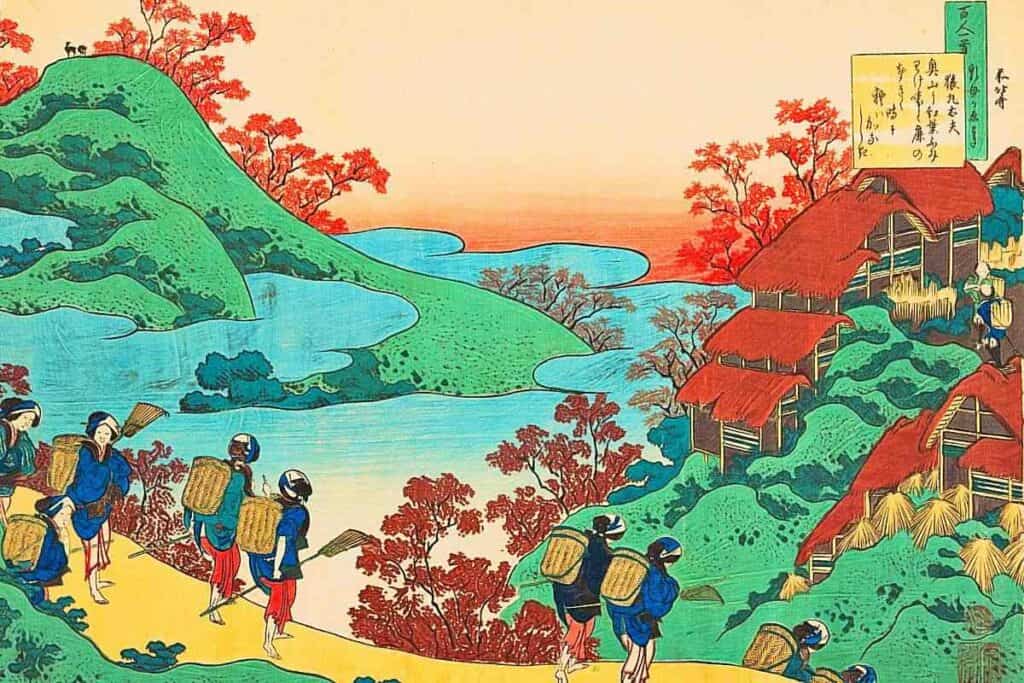
These works usually showcase everyday life scenes from Japan like cities, landscapes, portraits, and even snippets of nature’s beauty!
Not only did this style capture popular trends but also significant events at those times marking historical moments too.
In addition to its fascinating subject matter focused on daily life elements- Ukyio-e promoted ideals surrounding physical attractiveness too – so captivating right?
Want to dig deep into why we love these prints? Come along with me then…
Table of Contents
History Background of Ukiyo-E
During Japan’s Edo period, which lasted from 1603-1868, artistic expression saw a significant rise. One style in particular that emerged during this time was Ukiyo-e or Woodblock prints.
Back as far as the eighth century A.D., woodblock printing existed in Japan to produce religious texts and imagery but it wasn’t until the Edo era that Ukiyo-e became so popular.
The phrase “pictures of the floating world,” translates into ‘Ukiyo-e’, referring to how transitory life is while also reflecting on urbanized merchant culture at that moment.
Artists who specialized in producing these works used their artistry to portray daily tasks such as entertainment and nightlife found throughout Tokyo (which was called “Edo” back then), famous performers’ images like actors/courtesans portraits plus landscapes with much creativity involved.
Carving designs onto blocks made out of wood led them down a path towards an ink-filled route thus resulting in multiple printed copies since one carved block would do various printings over time; by pressing upon paper material & making different impressions–each unique!
There were many successful creators associated with this level of artwork prowess most notably Hokusai Katsushika; he had been prolific between eighteenth-and-nineteenth centuries!
Especially noteworthy were his series comprising legendary depictions – entitled “Thirty-Six Views Of Mt Fuju” showcasing landscape sophistication involving elements like flatness alongside perspective providing a bird’s-eye view fondly remembered even nowadays.
Another famed artist was Ando Hiroshige who came to be known for creating “Fifty-three Stages of the Tokaido” collection illustrating various stages of travel upon Japan’s major road – this only added fuel to an already prosperous Ukiyo-e print market since it brought about a widespread demand making prints more accessible.
With so many available outlets, artists could broaden their marketing sphere thereby impacting society with culture-of-consumption idea-making.
This spawned new forms in mass media as well as helped create job sources within publications; Japanese art also influenced European Impressionism evident by bold-color pallets and everyday lifestyle depictions commonly found throughout its creations- using woodblock printing!
As Japan began opening up towards Western influence back in 1853 there developed overseas partnerships between artists–leading everyone involved astounded and yielding stunning results.
These all attributed ultimately to playing a significant role in artwork played across that country’s time period seen through likes Ukyio-e genre expertly designed skill professionals sharing remarkable creativity.
The Cultural Significance of The Ukiyo-e Prints
Landscapes along with historical myths portrayed innovative ideas & visions through Ukiyo-e techniques established new ways of explaining iconic features within Japanese artwork styles.
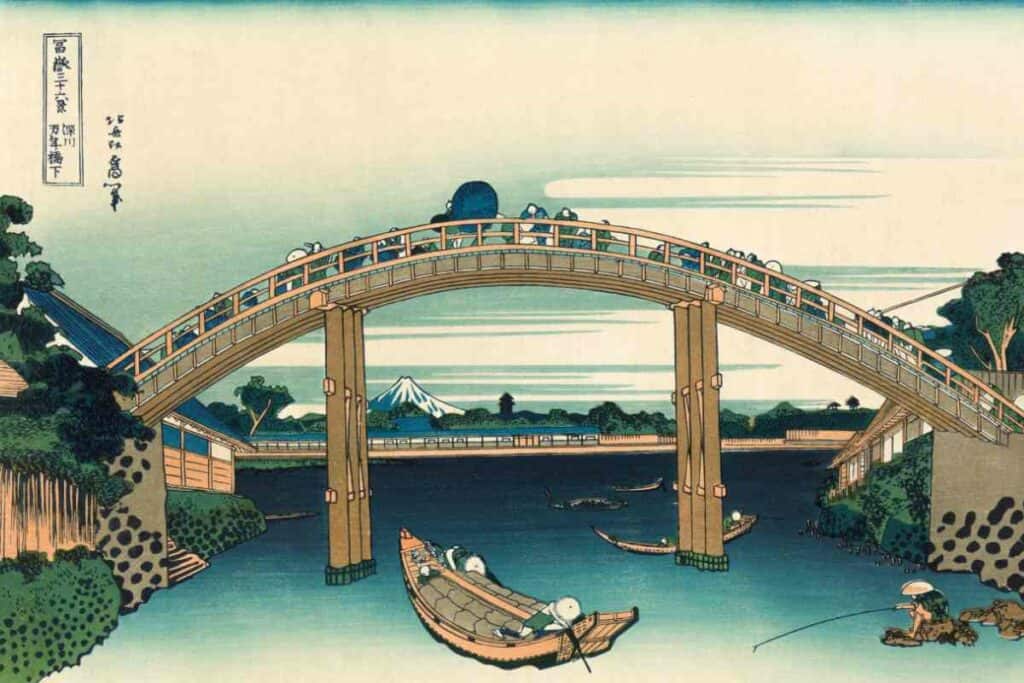
Like Mount Fuji seen via Hokusai’s Thirty-six Views series representing pivotal moments from its vast history using varying perspectives across each image depicted therein creating a rich tapestry for viewers around today even if they haven’t visited before!
Finally comes technology influences research development too-looking back over both French Impressionists’ works studying ukiyo-e-art possibly highlighting capabilities of reproduction with similar vitality and spontaneity.
While attempting original creations layering multiple components together to visualize something fresh and enticing to spectators.
These fascinating prints served as a way to introduce new realities in Japan’s Edo period while also paving the way for innovative mass printing techniques.
Imagine being able to create large-scale marketing materials with ease – it was like modern digital technologies but from back then!
It’s amazing how these artistic achievements expanded society’s imagination and provided such an essential cultural background during that time.
Did you know that the ancient artwork pieces from Asia and West Africa influenced Western artists in a big way?
I’m talking about those paintings with beautiful colors and shapes – they were so captivating! French Impressionists saw these works of art and became inspired to create their own unique style.
They combined elements from both styles resulting in something totally new which included everyday scenes people could relate to.
This creative period is just amazing, it’s still appreciated by people all over the world today because it really marked an essential time throughout history when different cultures came together through art.
What Materials Are Used In Japanese Woodblock Printing (Ukiyo-e)
When I first learned about traditional Japanese woodblock printing, also known as Ukiyo-e, I was fascinated by the various materials involved in this art form.
To create these beautiful prints that have been treasured for centuries, artists used several essential components.
1. Woodblocks
When I think of Ukiyo-e printing, the wood block is what comes to mind first! It’s crazy how important they are. Did you know that cherry and pear woods make up most of these blocks?
These super-talented craftsmen intricately chisel out parts in the wood where the ink will be put on later.
These sections end up being raised from the rest of the surface making sure intricate designs and details come through clearly with each print made.
2. Rice paper (Washi)
After the completion of carving wooden blocks, comes the process of printing an image onto washi.
This is a type of Japanese paper that has been made using mulberry fibers and is renowned for its durability and strength.
It permits crafting images with detailed precision such as sharp lines and vivid colors creating excellent end results.
3. Pigments
Ukiyo-e printing uses pigments made from natural materials like ground minerals, shells, and organic matter.
These vibrant colored powders are mixed with water to create a paint-like consistency which can be easily applied using tools such as brushes onto the wooden blocks for printing purposes.
4. Brushes and other printing tools
Besides using wooden blocks and pigments, Ukiyo-e printing also involves the use of various other tools like brushes, baren (a handheld tool used for applying pressure to paper), as well as knives or cutting equipment that aids in removing unwanted wood from the blocks.
Popular Ukiyo-e Genres
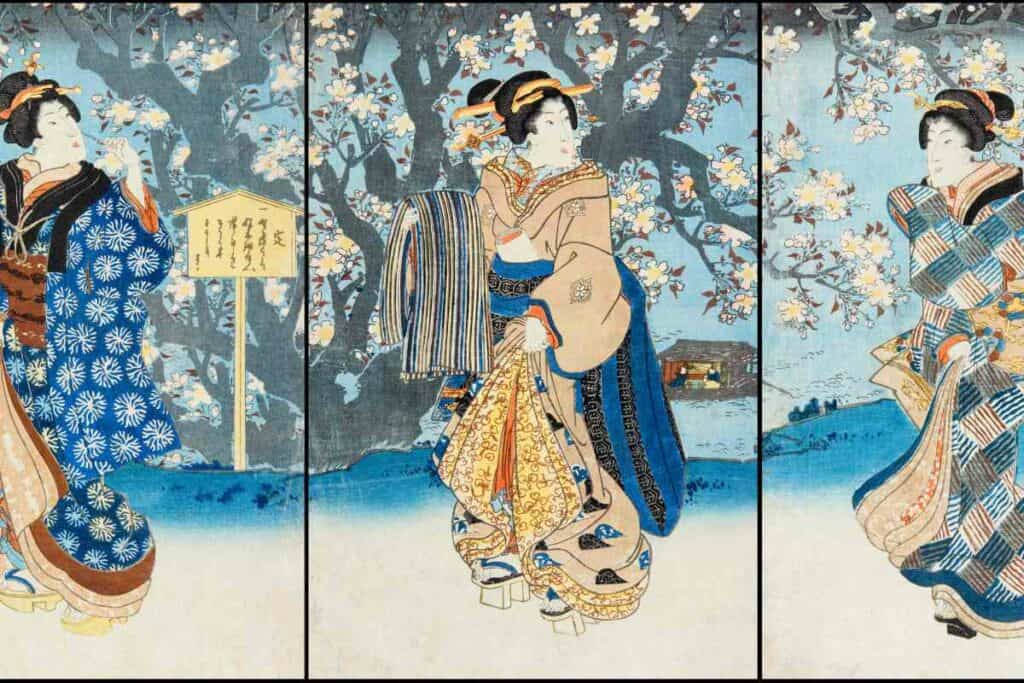
Bijin-ga
Have you heard of Bijin-ga? It’s a truly breathtaking style of Ukiyo-e art that showcases women in all their beauty.
You’ll be blown away by the stunning paintings and prints, which depict these gorgeous subjects adorned with lavish clothing and ornate hairstyles while striking various poses.
Back in the Edo era, affluent merchants and samurai also couldn’t get enough!
They collected these works to add some extra elegance to their home’s decor. Can you imagine being surrounded by such awe-inspiring artwork every day?
Yakusha-e
Yakusha-e was super popular during the Edo period in Japan and it mainly features actors and theatrical performances.
As more everyday people started going to theatre shows, artists began creating these vivid images with bold colors, dramatic poses, and dynamic compositions that truly caught the essence of theater culture back then!
Musha-e
Musha-e is a Japanese woodblock print genre that showcases fierce samurai warriors in intense, action-packed scenes.
The colors are so vibrant and the details of the weapons and horseback riding are just stunning!
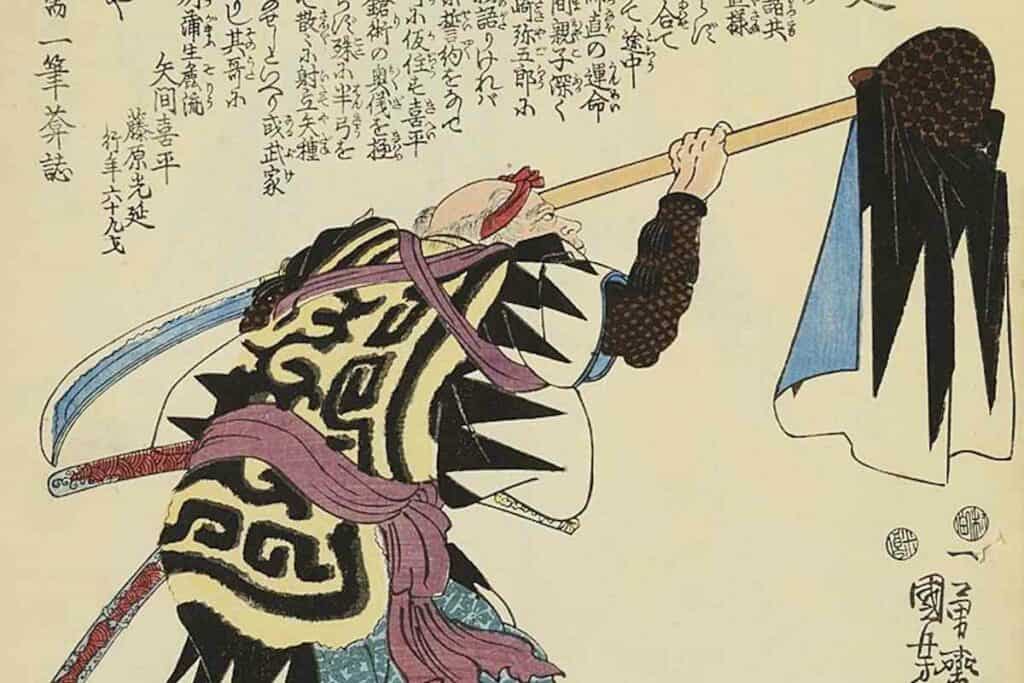
But what makes these prints even more special is how they inspired Japan’s warrior class to follow their Bushido code.
These pieces weren’t just for looking at – they were reminders of honorable conduct on the battlefield.
Yokai-e
Yokai-e is this mesmerizing type of Japanese woodblock print that showcase mystical creatures and ghosts from old folklore.
The artists pour their hearts into every piece they make—carefully crafting intricate details with vibrant hues to capture both fear and awe in us.
It’s absolutely fascinating how Yokai-e survived hundreds of years since its birth! Maybe it’s because each print carries a little bit of Japan’s history within them.
They let me embrace my curiosity while experiencing something truly out-of-this-world compared to other forms of art I’ve seen before!
Meisho-e
Meisho-e is a beloved genre of Ukiyo-e that originated in 17th-century Japan. It depicts famous places and scenic spots, usually accompanied by poetic captions to evoke certain emotions or memories associated with the location depicted.
Meisho-e prints were highly sought-after souvenirs for those unable to travel themselves, making them an important part of Japanese tourism history.
How Did Ukiyo-e Art Influence Our World Today?
Ukiyo-e art is an ancient form of Japanese woodblock printing that has played a significant role in shaping the world we know today.
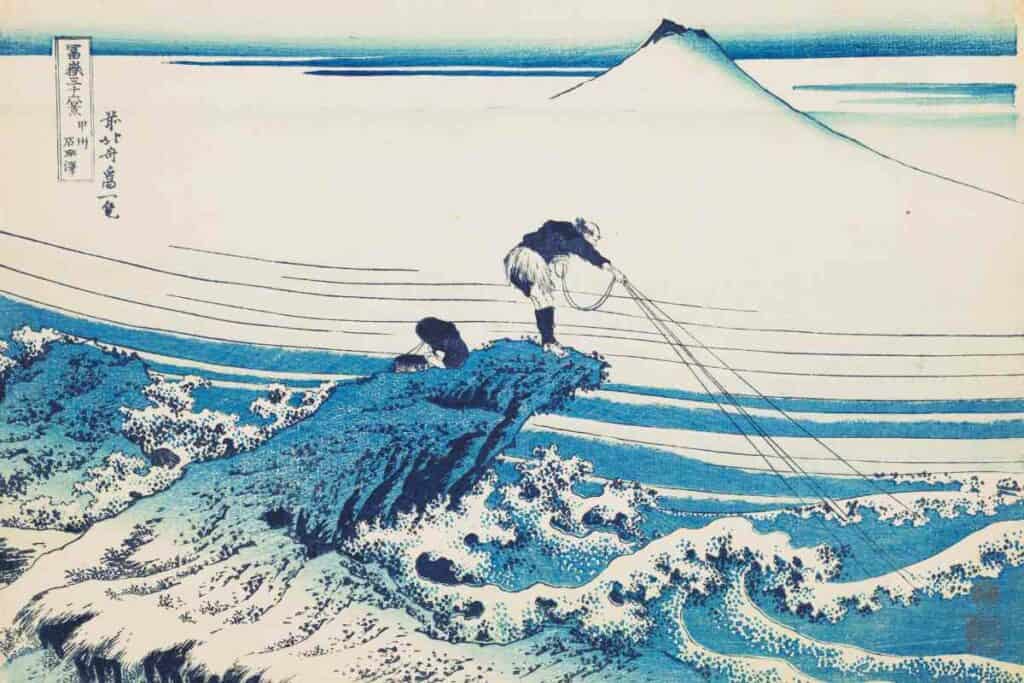
During its peak popularity, ukiyo-e was responsible for creating some of the most recognizable masterpieces known to man.
Today, this specialized graphic technique continues to influence and inspire artists from around the globe. Many modern-day creatives have adopted elements used by ukiyo-e greats such as Hokusai and Hiroshige into their own contemporary works; emphasizing simplicity yet beauty with every stroke.
It’s not just fine arts circles where Ukyio-e had a remarkable impact — through commerce, it positively impacted all facets of our daily lives like apparel graphics or interior design items, etc.
This valuable medium introduced aesthetic concepts long before they became popularized globally and therefore has been implemented numerous times even outside Japan over 150 years since first being created!
Can you believe the impact that art from centuries ago still has on our world today? It’s amazing how it continues to influence not only other visual mediums like comics but also tourism-related products.
I’m particularly fascinated by the Edo-era Tokyo and Kabuki theaters which have a rich history of traditional visual language within their genre. Seeing this artwork come to life is truly breathtaking!
Most Famous Ukiyo-e Artists and Their Works
1. Katsushika Hokusai – “The Great Wave off Kanagawa”
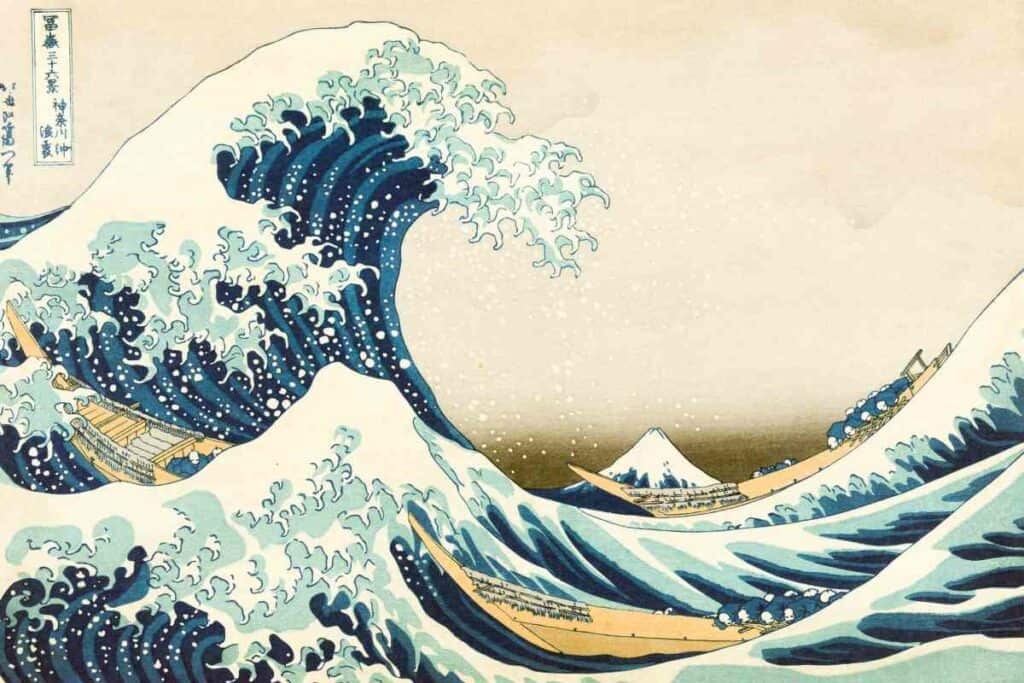
Katsushika Hokusai was a pretty famous Japanese artist from the 19th century. One of his most iconic works is actually a woodblock print called “The Great Wave off Kanagawa”.
This piece features this huge wave with the majestic Mount Fuji in the background and has become super emblematic of Japan’s cultural identity! It really is such an amazing work of art that continues to be celebrated as one of history’s greatest pieces!
2. Utagawa Hiroshige – “The Fifty-Three Stations of the Tokaido”
Let me tell you about this famous artist named Utagawa Hiroshige. He’s known worldwide for his series of woodblock prints called “The Fifty-Three Stations of the Tokaido.”
These masterpieces portray different images along a road that connects Edo (Tokyo now) and Kyoto in Japan during the early 1800s.
What makes these works so iconic is their stunning landscapes, remarkable attention to detail, and capacity to catch everyday life glimpses from back then.
It’s truly impressive how they capture realistic scenes like travelers resting on roadside inns or peasants working on farms without sacrificing their artistic beauty — something perhaps only someone as talented as Hiroshige could pull off!
3. Kitagawa Utamaro – “The Courtesans and Actors Series”
Kitagawa Utamaro was an amazing artist during the Edo period in Japan. Have you ever heard of him?
One of his most famous pieces is “The Courtesans and Actors Series” which has stunning portraits of courtesans and actors living their daily lives.
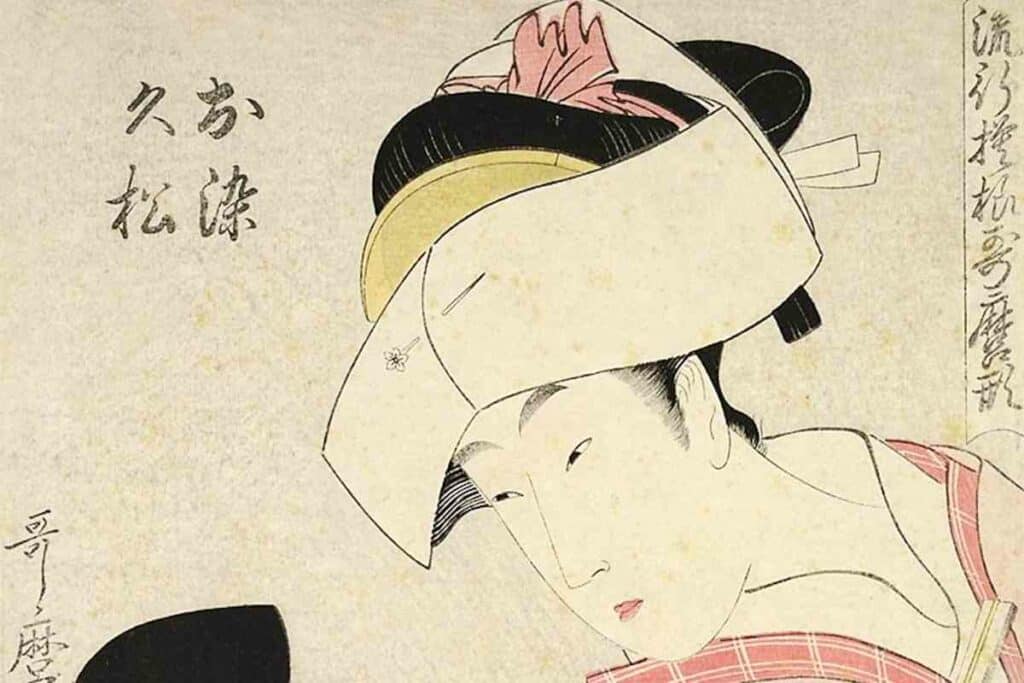
What made his artwork so special were all the intricate details he put into it–the colors are beautiful and everything looks super elegant with graceful lines that really capture how life was like back then.
It’s a great example of Japanese culture at that time!
In Conclusion
I am absolutely fascinated by the intricate art of Japanese woodblock printing, which is also known as Ukiyo-e.
It’s amazing how these prints have gained such incredible value not just in Japan but throughout the world.
The artists who created them are truly masters at their craft – capturing everyday moments with an unparalleled level of precision and detail that was simply unmatched during their time.
From geishas to samurais, from landscapes to so much more, every work produced has become a hugely recognized cultural icon across various media platforms – further cementing its importance for generations upon generations to come!
- The Forbidden Japanese Island That Will Give You Nightmares
- Miss Japan Forced to Wear Sailor Moon Costume Since Childhood: Claims It’s the Secret to Her Success
- Essential Guide to Japan VPN: Secure Access and Privacy for Travelers
- Sumo Wrestler Suit for Adults by TOLOCO: Best Sumo Suit?
- Eki Stamp Book (Gotta Collect Them All!)
- Explore the Fascinating World of Japanese Rubik’s Cubes

